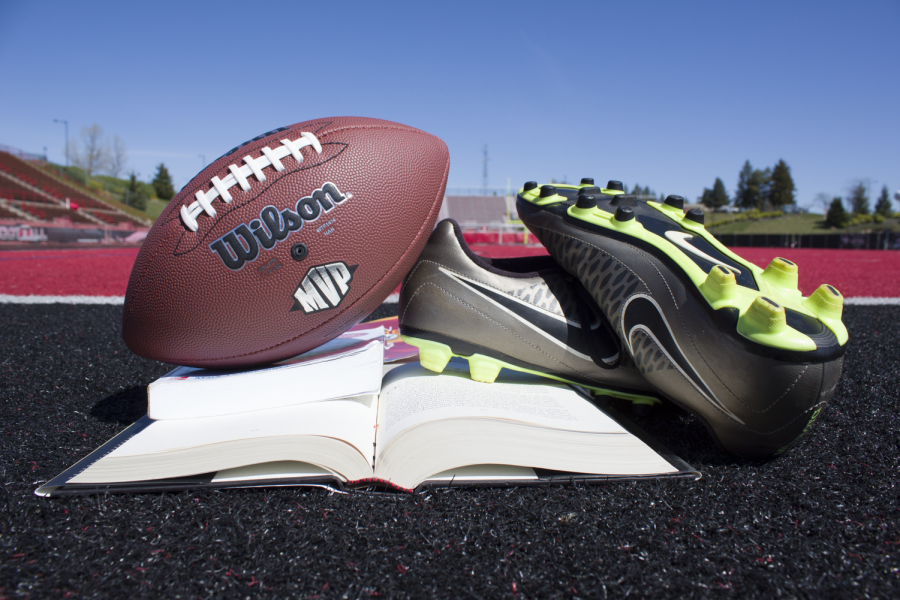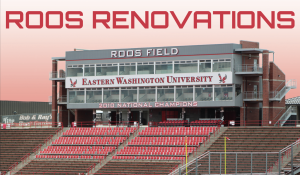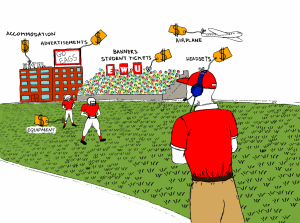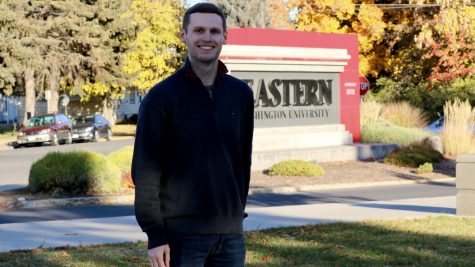Breaking down EWU’s athletic scholarships
Majority of student-athletes do not receive ‘full ride’ scholarships
The majority of EWU’s student-athletes do not have full ride scholarships, including the entirety of the football team. Out of 335 athletes from 2017-2018, 242 were on some sort of scholarship aid, while 93 received no form of scholarship aid according to the athletic department’s grant-in-aid breakdown.
May 8, 2019
It’s no secret that most NCAA athletes, including those at EWU, receive athletic scholarships to attend school and participate in their respective sport.
However, the process and methodology in which this money is allocated isn’t as well known.
In 2017-18, EWU had 335 total student-athletes; 242 were on some form of scholarship aid, while 93 received none, according to documents received from the athletic department.
For each sport, the NCAA sets limits on the amount of scholarships that public universities can dole out each year. Some sports are considered “headcount,” meaning all the scholarship earners in those sports receive a full scholarship automatically. The only headcount sports at EWU are men’s and women’s basketball, volleyball and women’s tennis.
All of the other sports are considered “equivalencies,” meaning scholarships can range from partial to full.
“(With) an equivalency sport, you have so many scholarships (to offer),” EWU Athletic Director Lynn Hickey told The Easterner. “Then you can split those up any way you want to as long as you stay under that total number. And there’s a formula to figure all that out.”
Despite having the option, very few of the equivalency sports at EWU give full scholarships to their athletes. According to the athletic department, there are only a handful of full-ride scholarships this year, including a couple soccer players. Notably, none of the student-athletes on the football team have one.
Chad Karthauser, associate athletic director for business and finance, told The Easterner that the amount given is at the discretion of the head coach. Hickey said it’s also driven by the importance of the given athlete’s position.
“You might be recruiting a kid and offering them a half (scholarship) and the school you’re recruiting against is offering them three quarters,” Hickey said. “So it’s a game.”
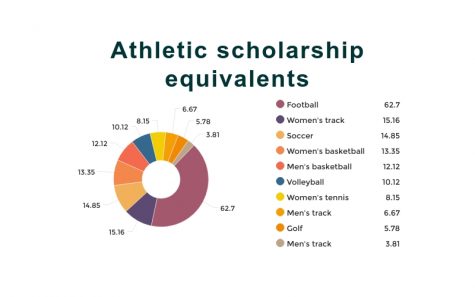
As mentioned previously, 242 EWU student-athletes received some amount of scholarship aid in 2017-18, while 93 did not. The athletic department doled out 152.71 scholarship equivalents that year, equating to a cost of $4,166,339. Meanwhile, 182.29 scholarship equivalents were paid by student-athletes; revenue was estimated to be $4,650,484.
More simply put, EWU turned a $484,145 profit after considering the amount of student-athlete scholarships given out and the amount of tuition that partial or non-scholarship earners paid.
“At a time when our campus is trying to increase enrollment, because enrollment’s down, then I think that one significant value that we can show is the number of students that we attract here because of athletics,” Hickey said. “Even though there are costs to get them here, that we more than pay that back.”
Athletic scholarships at EWU are funded in two ways: university support and contributions (primarily through the Eagle Athletic Fund). The EAF, which is used for operations and scholarships, relies on donations from fans and alumni.
Moving forward, Hickey said the athletic department has a two-fold goal with the EAF: to raise the actual numbers of donors and “pretty much quadruple” the amount of money raised.
“A goal that we have, is we want to generate about $2 million a year every year to help with our scholarship bill,” Hickey said. “That would alleviate a share of the burden that we have right now with the university. That’s what we’re working toward.”
To aid in this, football season ticket prices were increased for next season. Another level, “the founder’s circle” was also added to the EAF and will begin this summer. According to Hickey, fans in that tier agree to contribute either $5,000 a year for five years, or $10,000 a year for five years.
So far this year, fundraising has been effective according to Hickey. In addition to raising a record $130,000 at the 38th Annual Orland Killin Scholarship Dinner on April 27, the athletic department has had “real success” with people coming forward to contribute in the last two months, including to “the founder’s circle.”
Growing the EAF is even more important now as Roos Field renovations are potentially on the horizon, Hickey said. Vice President of Business and Finance Mary Voves and Hickey will present a proposal for stadium renovations at the May 10 board of trustees meeting. Since it is against state law for the university to contribute money for construction, donations will make up a large part of funding.
If renovations are approved, the athletic department will “have to do two different kinds of fundraising at the same time,” Hickey said. “We can’t drop the EAF and forget scholarships but we’ve got to fundraise for the stadium.”
Last year, the EAF had about 1200 donors.
“For us to be successful, we need 4000,” Hickey said.
Hickey acknowledges that expanding to a $2 million yearly contribution and 4000 donors from the EAF won’t happen “overnight.”
However, she is ready for the challenge.
“It’s gonna be a great opportunity, let me put it that way, to prove ourselves,” Hickey said. “But we know what the message is, we know what our responsibility is and we’re ready to go after it. We’re doing well now. We’re doing much better and we will continue to get better and better.”



